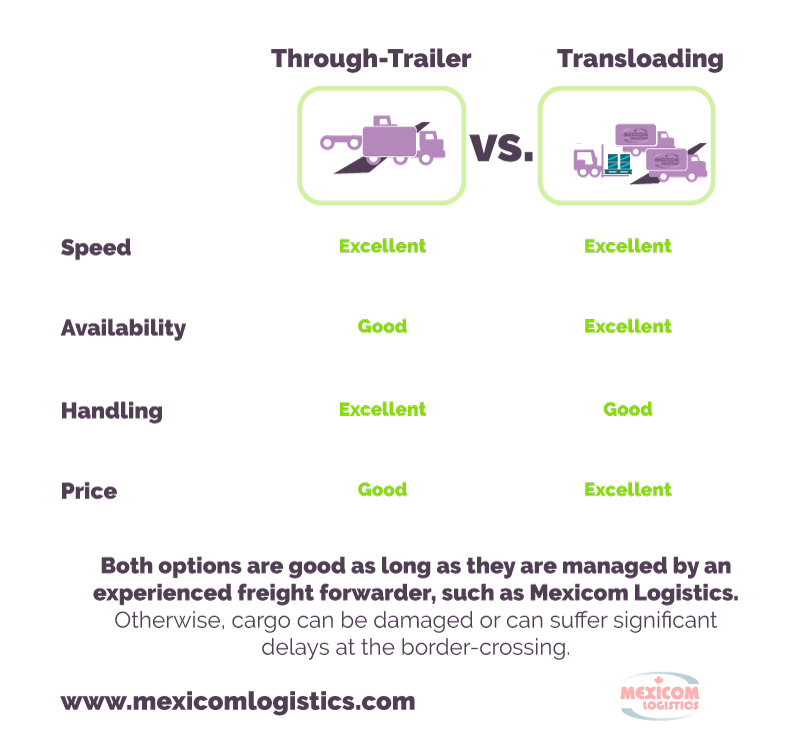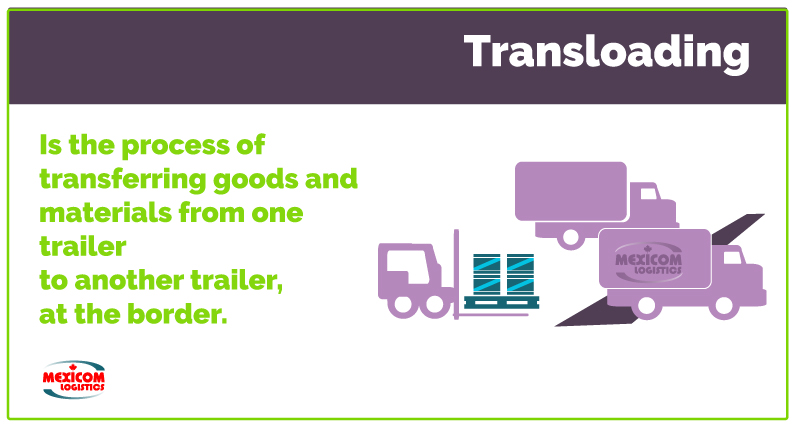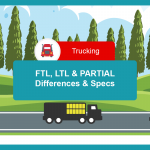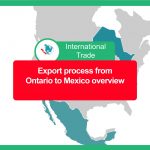Through-trailer vs Transloading. Understanding the US-Mexico cross-border options
The border-crossing process is one of the most important steps when shipping freight from the US or Canada to Mexico. Cargo can be damaged or can suffer significant delays at the border-crossing if this service is not provided by an experienced freight forwarder. In this post we explain the border crossing process and we present a comparison between the transloading and through-trailer services, which are the two options to transport freight through the US-Mexico border-crossing.
In simple terms, what is the US-Mexico border-crossing process?
When shipping freight from the US to Mexico, once freight has arrived at the US border crossing, the freight forwarder (Mexicom Logistics) arranges for a drayage carrier to move the shipment from the US side of the border to the Mexican side of the border. This movement is called the border-crossing process.
There are two options to transport freight at the border-crossing: Transloading and through-trailer.
What is Transloading?
In the context of land transportation from Canada and the USA to Mexico, transloading is the process of transferring goods and materials from one trailer to another trailer, at the border. This means that during the border-crossing process, the drayage company will take the trailer across the border to a transload facility, where the load is going to be transferred from the American trailer to a Mexican trailer. The Mexican truck will complete the transportation of the goods until the final destination.
Be aware that in the logistics and supply chain world, the word transloading can refer also to the process of “transferring a shipment from one mode of transportation to another”. For example when a shipment requires to be transported by truck to an airport, then by plane overseas.
Types of transloading
- Transloading palletized goods from a Dry van to another Dry Van
- Transloading unpalletized goods from a Dry van to another Dry Van
- Transloading palletized goods from a Flatbed to another Flatbed using a forklift
- Transloading unpalletized goods from a Flatbed to another Flatbed using a crane
What is through-trailer?
Through-trailer occurs when the load is transported in the same trailer from the pick-up point to the final destination. During the border-crossing process, the drayage company will take the trailer from the American carrier’s yard to a partner’s yard in Mexico, so the load will remain in the same trailer during the whole border-crossing process.
Now, let’s compare both options.
Transloading vs Through-trailer comparison

Speed
The transloading option is believed to be slower than the through-trailer one. And, in fact, it is. But the key question is: How slower is transloading compared with the through-trailer option? In fact, for palletized freight, the transloading process usually takes a few hours. Then, the transloading of the goods will not affect the overall transit time in terms of the total number of days needed to transport any given load from one point in the US or Canada to another point in Mexico.
However, unpalletized goods, oversized loads or overweighted freight take longer to be transferred from one truck or trailer to another one. In these cases, the through-trailer option is significantly faster.
Availability
In general, there is greater availability of transloading services than through-trailer services. However, freight forwarders with good knowledge and experience in the US-Mexico border-crossing, such as Mexicom Logistics, are able to connect their customers with a great number of carriers that offer both border-crossing solutions: transloading and through-trailer.
Handling
Unlike through-trailer services, transloading services require cargo handling. In this point, it is very important that carriers follow the best practices of cargo handling, such as:
- Use of experienced personnel with protective equipment.
- Secure the cargo
- Use tested specialized lifting equipment, such as forklifts, cranes, wire ropes, slings, hooks, etc
- Reporting of defects any apparent deficiency or hazard that could affect the safety of unloading or loading operations
Also, it is very important that the shipper uses proper packaging able to withstand the various dynamics and static forces on road.
Recommendations when choosing a transloading service
If you are shipping freight from Canada or the US to Mexico, make sure that:
- Your freight forwarder specializes in the US-Mexico border-crossing.
- Your freight forwarding has a transloading and cross-docking office in Laredo, so it can take care of the transloading process itself.
- Your freight forwarder has an experienced team that handles your load carefully and following the best practices in order to do not damage your goods.
The speed and effectiveness of the transloading process will depend on how experienced the freight forwarder is, and how well it can manage the whole process with all parties involved.
Recommendations when choosing a through-trailer service
Make sure that:
- Again, your freight forwarder specializes in the US-Mexico border-crossing.
- Your freight forwarder has a wide network of carriers that can offer you a through-trailer service at the best rate.
- Yoru freight forwarder manages the logistics efficiently and has drivers available on time, once the freight crosses the border.
In conclusion, both options, transloading, and through-trailer are good as long as they are managed by an experienced freight forwarder, such as Mexicom Logistics. Otherwise, cargo can be damaged or can suffer significant delays at the border-crossing.












I hope they know that freight brokers with in-depth expertise and experience in the US-Mexico border crossing, like Mexico Logistics, are able to link their clients with a wide range of carriers that provide both transloading and through-trailer border crossing solutions.Our family friend is expanding their business to include water transport, and they need to find a barge transloading equipment service to efficiently load and unload cargo. The decision to explore this service arises from the increased demand for waterway transportation and the need to optimize their supply chain.
Thank you so much for your comment, Lily!